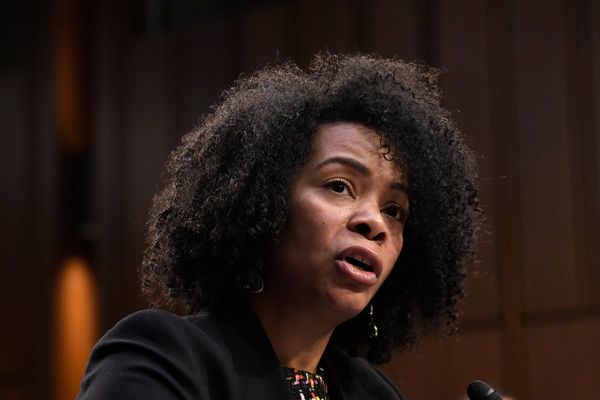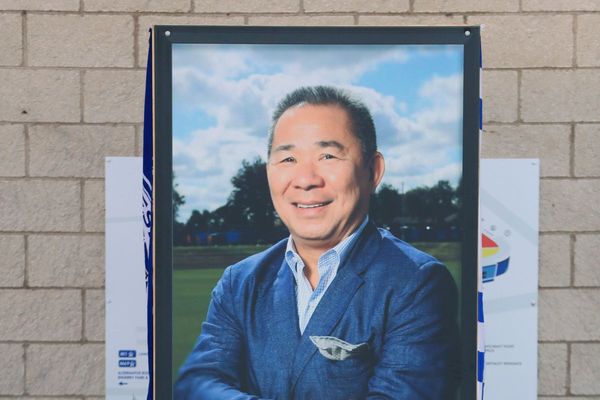
Journalists covering election violence are typically more concerned with Kenya than Kenosha. Widespread domestic unrest, political violence that accompanies elections, and calls for civil war are common in fragile states or countries with authoritarian leaders willing to unleash their pet security services on dissidents and the civilian population in general. U.S. government agencies, foundations, and international organizations try to help by monitoring polls, helping peaceful groups to organize, and pressing regimes to ensure a peaceful transition of power.
But this November, things are different. Experts and government agencies are warning about the dangers of violence as Americans vote for their next president. We agree that violence is likely, but violence might be limited to voter intimidation at a few polling places. There is a risk, however, of bloodier attacks, especially by white supremacist and anti-government extremists, against minority communities and Democratic Party politicians. The risk of violence may grow should President Donald Trump be defeated at the polls and try to delegitimize the election results.
Part of the complexity that counterterrorism agencies must contend with is the diverse nature of potential threats on the horizon. For the past two decades, the United States has conceived of counterterrorism as something that happens overseas against Salafi-jihadi groups like al Qaeda and the Islamic State. There have been a number of high-profile incidents on U.S. soil perpetrated by homegrown violent extremists motivated by jihadi ideology—the Boston Marathon bombings, the San Bernardino attacks, the Pulse nightclub massacre in Orlando.
But now the onus has shifted to domestic considerations, which the United States is ill-equipped to handle given the lack of a domestic terrorism designation and the political complexities that domestic political violence often entails.
The risk of violence may grow should President Donald Trump be defeated at the polls and try to delegitimize the election results.
Extremists exist on both ends of the spectrum, with the threat from the far-right widely assessed to be far more dangerous than that on the far-left. Violent white supremacists and neo-Nazis are the most pernicious manifestation of this threat, but there are also groups like the Oath Keepers, Boogaloo Bois, and a range of lesser known but still serious groups like the anti-government militias that have representation in all 50 states. Most of these militias are fierce proponents of the Second Amendment, are well-armed, train regularly, and seek to actively recruit members with law enforcement and military experience.
Based on the recent plot to kidnap Michigan Gov. Gretchen Whitmer, they are also ambitious in their objectives and willing to take serious risks like kidnapping and harming a major U.S. political figure. That same cell of militia members also apparently plotted to kidnap Virginia Gov. Ralph Northam.
There are also threats on the left, with the possibility of clashes between Trump supporters and Antifa adherents, many of whom consider the president a fascist and who could be motivated to resort to more extreme measures, including violence, in the wake of a Trump election victory. Trump has repeatedly railed against Antifa, portraying the movement as far larger and more dangerous than it is in reality. Nevertheless, by threatening to designate Antifa as a terrorist organization, Trump has put the movement’s members squarely in the crosshairs of the far-right, which could lead to a self-fulfilling prophecy of direct clashes on Election Day and in its immediate aftermath.
Making any threat assessment more complex is the nature of the groups and networks themselves. The white supremacist and anti-government extremist threat is marked by a high level of decentralization. There is a constant dialogue on social media that has created a broader extremist ecosystem, but members of organized groups represent only a small part of this community. In this ecosystem, the range of enemies is vast: immigrants, Jews, Muslims, Black people, the LGBTQ community, and liberals in general.
This range makes it hard to predict which targets are most at risk and how to defend them appropriately. Individual motives often mix with broader propaganda and memes dominating the movement. For similar reasons, attacks are more likely to be local—say, a mosque or a synagogue near where a potential shooter lives—rather than targets chosen by a group’s leadership for maximum psychological effect.
Because Trump himself may try to incite violence, or at least indirectly signal that he sympathizes with it, much will depend on his particular actions. To say the president’s rhetoric is erratic would be an understatement. He has regularly indicated that he sympathizes with QAnon, the Proud Boys, and other potential sources of violence and that he will bolster, rather than stop, Russian attempts to undermine the elections. Trump, however, is not consistent, and it is quite possible he will tweet about other grievances and otherwise avoid making things worse (though it would be too much to expect him to make things better).
To their credit, social media companies have become far more aggressive in trying to prevent election-related violence and misinformation, no longer tolerating QAnon or other groups that spew dangerous and false ideas. Although they have ramped up efforts as the election approaches, it is difficult for them to stop all dangerous discussion, particularly if it is embraced by senior political officials.
One can imagine a rapid back-and-forth on social media after a supposed outrage by the left (real or manufactured), leading to a sudden crisis that catches law enforcement off guard and overwhelms the officers detailed to a specific site or location. This happened when Black Lives Matter demonstrations broke out in Kenosha, Wisconsin after the police shooting of Jacob Blake. Outrage on social media transformed local protests into a broader confrontation involving so-called volunteers from outside the area, some violent like Kyle Rittenhouse, the 17-year-old who traveled from Illinois to Kenosha, where he shot and killed two protesters and injured a third.
There are a number of scenarios—all of them troubling—that could play out on Election Day.
First, there could be coordinated attacks conducted against polling places, committed by small cells of organized terrorists. These attacks have the potential to be the most deadly, given the command and control of movements and organizations, the long lead time of planning involved, and the likelihood of pre-attack surveillance and target selection to maximize casualties and coverage. Given the disorganization of the broader movement and government efforts against organized groups, this is a lower probability but high-impact scenario.
Second, there is the possibility of uncoordinated attacks where radicalized individuals, largely acting independently though responding to a shared narrative of supposed election fraud, see an opportunity to act and decide to launch an attack. Given the high volume of firearm ownership in the United States, even lone actors possess the capability to wreak havoc on a massive scale. Uncoordinated attacks could result from disinformation circulating online. There has also been a steep rise in vehicle attacks in 2020, many of which have targeted protesters and demonstrators.
Third, Election Day could also bring more attacks on individual political leaders, as with the alleged plot against Michigan’s governor by a far-right militia. Just this month, an individual was arrested in Wichita, Kansas, after threatening to kidnap and kill the city’s mayor—apparently angered by the mask mandate issued by the city government.
Fourth, terrorist attacks could be directed against locations linked to conspiracy theories peddled by QAnon. The range of targets here is diverse but might be in some way tied to the movement’s obsession with child sex trafficking or directed against other institutions the movement has fixated on at various points. This is difficult to predict—think the armed man who went to the Comet Ping Pong pizzeria in Washington, D.C., to stop what he feared was a child sex trafficking ring. Known as “Pizzagate,” this conspiracy theory bizarrely (and falsely) alleged that Hillary Clinton and a shadowy cabal of elites were operating a child sex trafficking ring out of the basement of a random pizza restaurant.
Fifth, and finally, Election Day may bring clashing demonstrations between supporters of Trump and those of former Vice President Joe Biden, with some incidents turning physical. The tension is tangible, and with both sides energized to a level previously unimaginable in U.S. domestic politics, there are bound to be confrontations in a country of nearly 330 million people. Isolated incidents could be amplified online, contributing to a sense of lawlessness and anarchy, thus instigating copycat violence and calls to engage in mayhem, civil disobedience, or worse.
Unfortunately, the dangers may only grow should Trump lose. For months, Trump has tried to delegitimize the electoral process, claiming (without evidence) that voting by mail would result in massive election fraud. Given his own vanity and the sycophants who surround him, he may even believe that the only way he lost was due to fraud. Should the president call on his supporters to demonstrate and “take back” their country, that could lead to mass counterdemonstrations and a volatile situation. Law enforcement agencies themselves would be in a precarious position, trying to preserve peace even as the commander in chief actively works to disrupt it.
What can be done to prevent all this? The ideal, of course, would be that the president tones down his rhetoric and, should he lose, gracefully concede defeat. Neither is likely. It’s always tempting to point the finger at Facebook and other social media companies and push them to do more, but for months they have anticipated these dangers and are trying hard to stop them. The same is true of homeland security and the FBI. At this point, constant vigilance is necessary from federal security agencies to citizens in general, all of whom must try to identify threats before they snowball and morph from local tragedies to national disasters.







